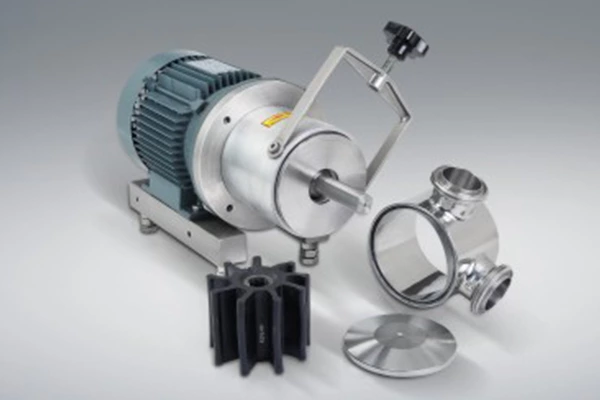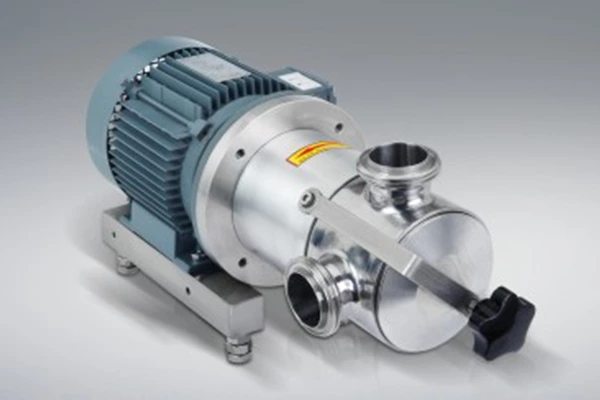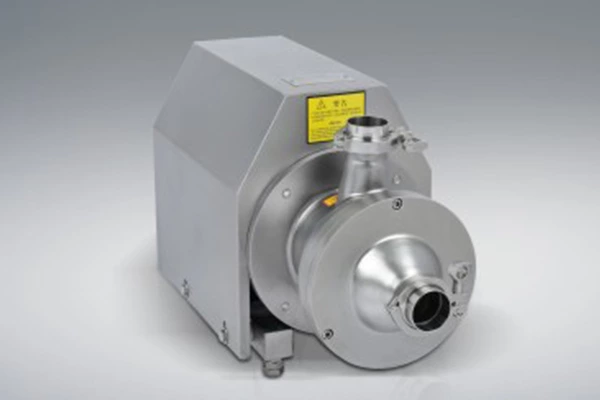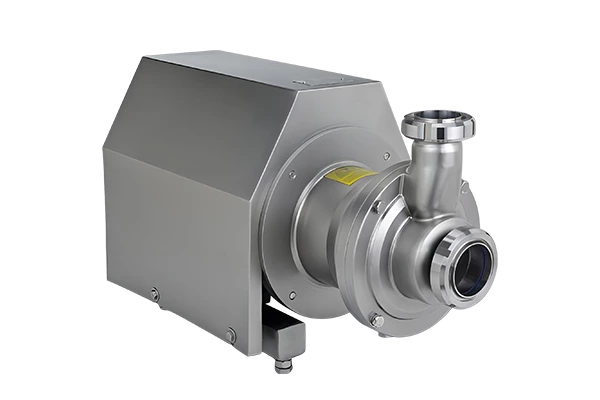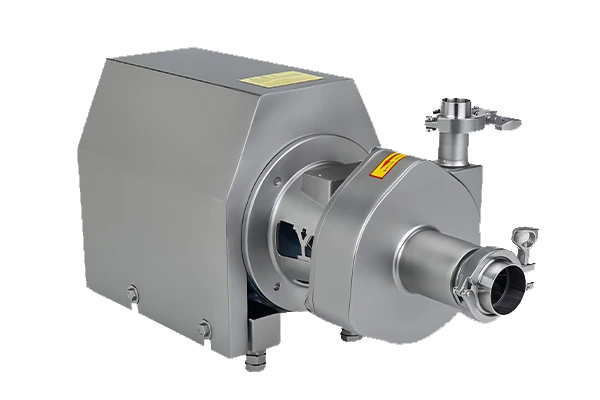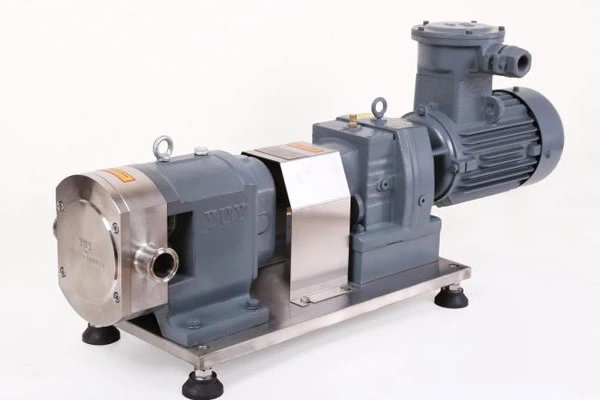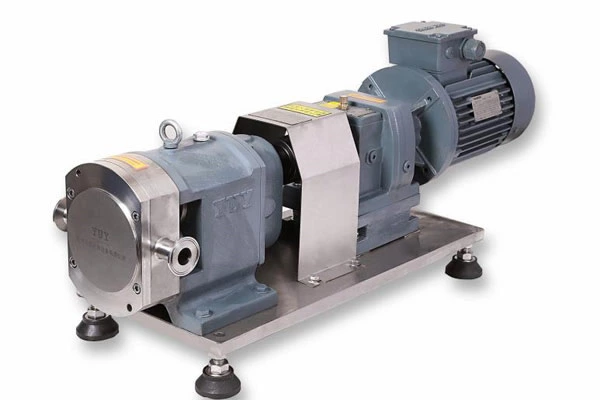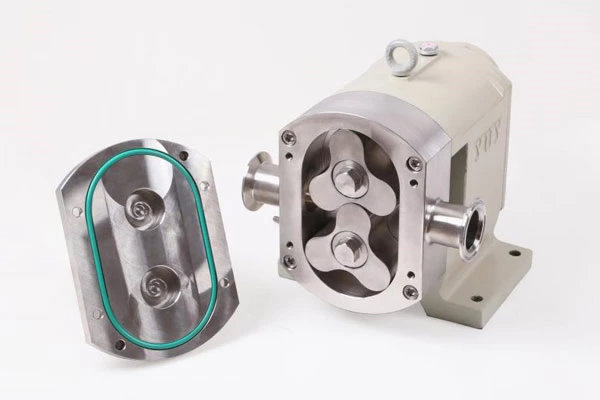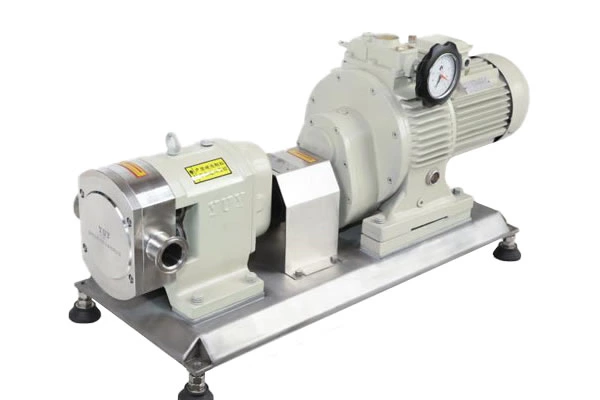How To Correctly Replace The Mechanical Seal Of A Cip Reflux Pump
1. CIP Return Pump Guarantee the quality of parts
The mechanical seal of the CIP reflux pump must be tested for sealing performance before leaving the factory and have a certificate of conformity. After long-term operation, the dynamic ring and the static ring are worn, the spring and the shaft are rusted and worn, the sealing rubber ring is worn, aged, and deformed, etc., which can cause leakage of the seal and must be repaired or replaced with new parts. The sealing surfaces of the dynamic ring and the static ring shall not have cracks, corner loss, scratches, pitting, flash and eccentric wear. Scratches and pitting cannot penetrate the entire sealing end surface. If the repaired dynamic and static rings are used, the sum of the boss heights of the dynamic and static rings shall not be less than 3mm, and the height of a single boss shall not be less than 1mm to avoid affecting heat dissipation. After the dynamic ring is installed, it should be ensured that it can move flexibly on the shaft. After the dynamic ring is pressed against the spring, it should be able to rebound freely to keep the dynamic and static rings vertical and parallel. The specifications of the dynamic and static rings and sealing rubber rings shall comply with the requirements of the drawings. The surface shall not be damaged, uneven in thickness, or uneven in hardness. The sealing rubber rings shall be replaced during overhaul. The outer surface of the spring is clean and free of rust. Before use, the length and shape test and pressure test should be carried out. The pressure difference of each group of springs at the specified compression length should meet the requirements, and the pressure error of each group of springs at the specified compression length meets the requirements. The free length tolerance does not exceed 0.5mm, the compression amount cannot be too large or too small, and the error is required to be ±2mm. The sealing sleeve and the pump shaft cannot be made of the same material, and the parallelism tolerance of the end faces on both sides and the non-perpendicularity tolerance with the axis do not exceed ±0.20mm.
2. CIP reflux pump ensures sufficient cooling and lubrication
Adjust the opening of the cooling pipeline regulating valve to ensure that the mechanical seal cooling pipeline is unobstructed. When the tank pump is opened, the gas in the sealing cavity must be completely discharged.
3. CIP reflux pump ensures installation accuracy
When disassembling the mechanical seal of the water pump, the dynamic and static rings should be cleaned, and a small amount of clean lubricating oil should be applied to the friction pair surface. Both the high-pressure end and the low-pressure end should be taken into account, and bumping is strictly prohibited. When installing the static ring gland, apply force evenly to prevent bias. Use a feeler gauge to check that the deviation of the upper, lower, left and right positions is no more than 0.05mm; check the clearance between the gland and the outer diameter of the shaft. The clearance should be even all around, and the allowable deviation at each point should be no more than 0.1ram. The radial runout of the pump shaft at the mechanical seal of the water pump should not exceed 0.05mm. Before installing the pump cover and the sealing end cover, carefully check the installation positioning dimensions of the mechanical seal. If the positioning dimensions do not meet the requirements, you can use a steel pad between the shaft sleeves to adjust them, but the steel pad must be accurate and the thickness difference should not exceed 0.01mm. The radial runout of the mechanical seal sleeve and the end face runout of the sealing surface meet the requirements.
For mechanical seals that have been in operation, if the gland is loose and the sealing surface moves, the dynamic and static ring parts must be replaced, and they should never be re-tightened and continued to be used. Because after such loosening, the original motion trajectory of the friction pair will change, and the sealing performance of the contact surface will be easily damaged.
4. Adjusting the end face pressure ratio of CIP reflux pump
The end face pressure ratio is an important parameter related to the sealing performance and service life. It is related to the structural type of the seal, the size of the spring and the pressure of the medium. If the end face pressure ratio is too large, the friction pair will be damaged; if the pressure ratio is too small, it is easy to leak. The manufacturer often gives a suitable range, and the end face pressure ratio is generally 3 to 6 kg/cm2. Adjusting the pressure ratio is to adjust the compression size of the spring. The free length of the spring is represented by A, the load borne when the spring stiffness produces a unit compression is k, and the specified pressure ratio is represented by P. These are all parameters given by the manufacturer. The size after compression is represented by B, then P/A-13=k, and 13=A-e/k is obtained, which is the size of the spring after installation and compression. If the size of the spring after installation is too large, the thickness of the adjustment pad can be increased between the spring seat and the spring. If the size is too small, the thickness of the adjustment can be reduced. The thickness of the adjustment pad is measured with a micrometer.
